Disclosure: This article contains affiliate links. We may earn a commission from purchases at no extra cost to you, which helps our travel content.
The moment my plane began its descent over Antigua, I knew my camera and I were in for something special. The island revealed itself as a photographer's dream palette – turquoise waters bleeding into azure skies, colonial buildings painted in every shade of the rainbow, and that Caribbean light that seems to cast everything in gold. After years of photographing austere monasteries across Europe and Asia, this weeklong solo trip to St. John's offered a complete visual reset – trading stone and shadow for vibrance and vivacity. Grab your gear and join me as we navigate this colorful capital through a photographer's lens.
The Golden Hours in St. John's
While photographers everywhere chase the golden hour, in Antigua this magical time takes on a quality I've rarely encountered elsewhere. The low-angled sunlight transforms the already vibrant buildings of St. John's into incandescent color blocks against deepening blue skies.
Morning golden hour (roughly 6:00-7:30 AM) offers the clearest light and emptiest streets. I spent three consecutive mornings at the harbor, capturing the fishing boats as they departed and returned, their weathered hulls reflecting the sunrise in ways that made my histogram dance. The light here is different – more saturated yet somehow gentler than what I'm accustomed to in the American Southwest or even northern Spain.
Evening golden hour (5:00-6:30 PM in winter) bathes Heritage Quay and Redcliffe Quay in amber light that makes the colonial architecture positively glow. Position yourself at the corner of Thames and Long Streets about 45 minutes before sunset for a shot that captures the entire color spectrum as the buildings catch the fading light.
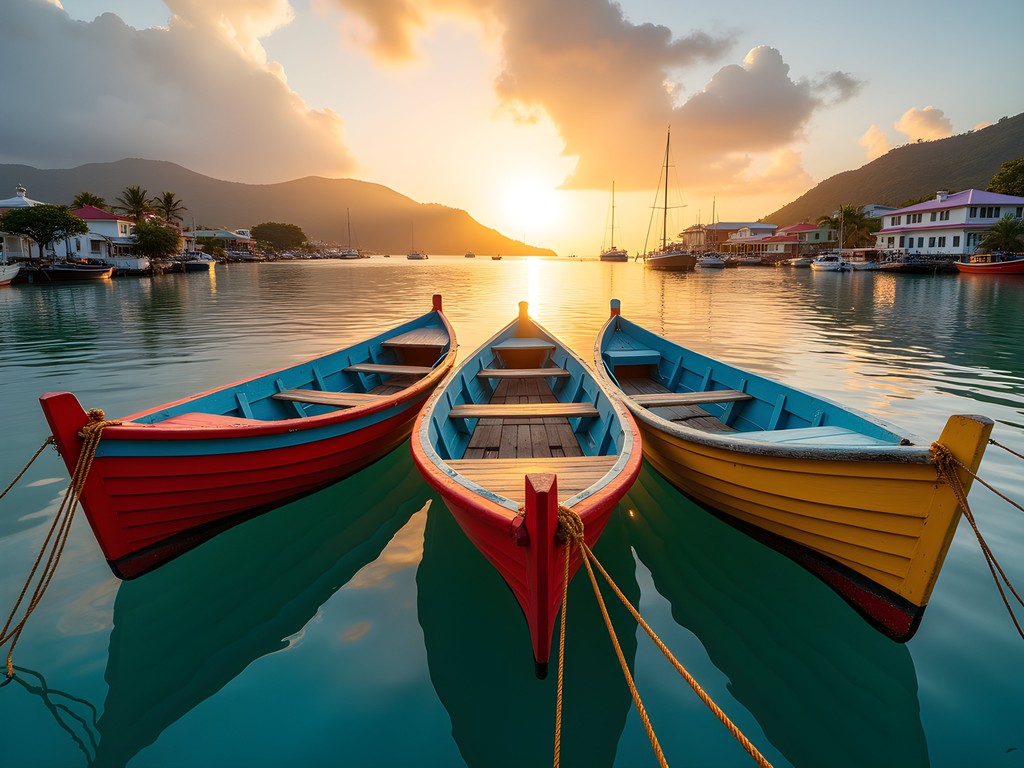
💡 Pro Tips
- Arrive at locations 30 minutes before actual golden hour to scout compositions
- Use polarizing filters to manage reflections and enhance color saturation in the harbor shots
- Pack a lightweight travel stool for low-angle harbor shots
St. John's Cathedral: Architecture in Context
The twin baroque towers of St. John's Anglican Cathedral dominate the skyline, offering both architectural interest and historical context. Built in 1845, the cathedral sits atop a hill providing excellent vantage points of the city below. As a monastery architecture enthusiast, I found myself drawn to this structure daily, circling it at different hours to capture how the changing light transformed its limestone facade.
The technical challenge here is exposure balance – the white cathedral against the typically bright Caribbean sky creates extreme contrast. I relied heavily on my graduated ND filter to tame the sky while maintaining detail in the cathedral stonework.
For interior shots, bring a fast lens. The cathedral's interior lighting is minimal, and tripods aren't always welcome. I found my camera stabilizer strap invaluable for achieving steady handheld shots at slower shutter speeds. The stained glass windows are particularly rewarding subjects in mid-afternoon when sunlight streams directly through them, creating colorful light patterns on the stone floor.
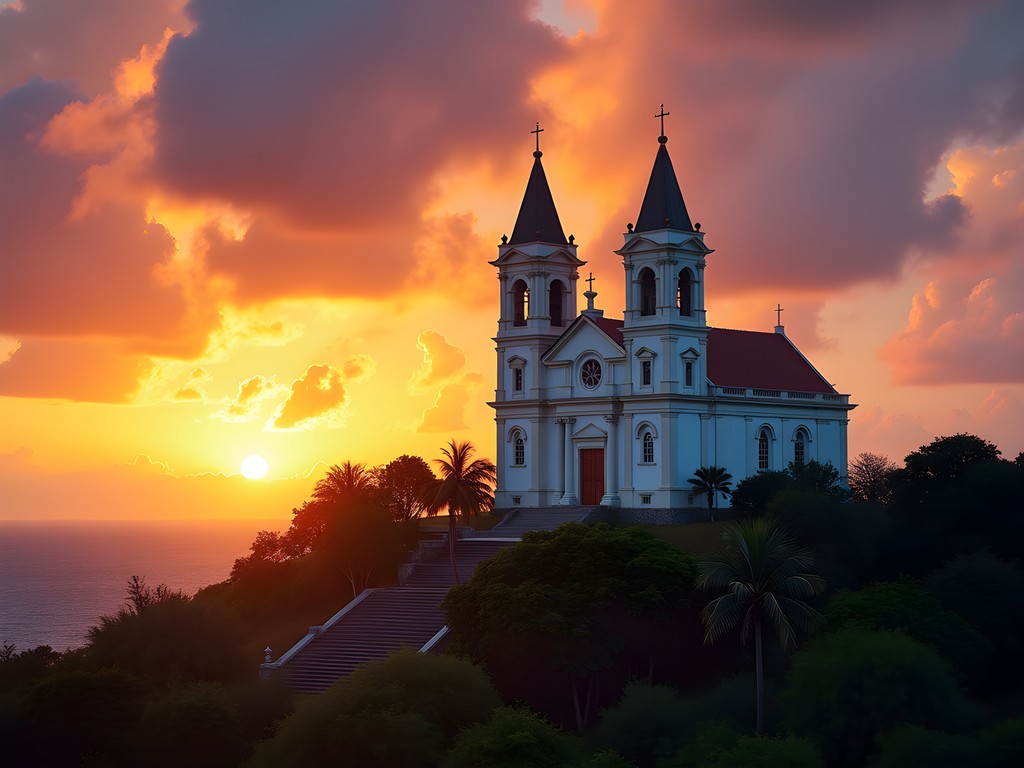
💡 Pro Tips
- Visit between 9-10 AM for optimal exterior lighting with minimal harsh shadows
- Use a graduated ND filter to balance bright sky with the white cathedral facade
- For interior shots, increase ISO rather than using flash to preserve the ambient light
Market Day: Capturing Local Culture
Saturday mornings at St. John's Public Market offer a sensory overload that challenges and rewards photographers willing to engage. Located on the southern end of Market Street, this is where I found the authentic pulse of Antiguan life – and the most vibrant color combinations imaginable.
The market requires a different photographic approach than the architectural work I typically do. Here, it's about moments rather than monuments. I switched to my 35mm prime lens for its versatility and less intimidating profile. The vendors arrange their produce in stunning color gradients – mangoes, soursops, and star fruits creating natural still-life compositions.
Approaching market photography ethically is essential. I always ask permission before photographing vendors directly, often purchasing something small first to establish a connection. My rudimentary Spanish occasionally helped bridge communication gaps, though English is widely spoken. I found that showing vendors the images I'd taken on my camera's LCD screen often led to genuine smiles and occasionally, even better photo opportunities.
The covered sections of the market present lighting challenges – harsh shadows and fluorescent lighting compete with streams of natural light. I used my light reflector to bounce some fill light into shadow areas when photographing particularly colorful produce displays.


💡 Pro Tips
- Visit the market early (before 8 AM) for the best light and most active scene
- Ask permission before photographing vendors directly – a small purchase helps establish rapport
- Use a prime lens with a moderate aperture (f/4-f/5.6) to maintain context while isolating subjects
Coastal Blue Hour: Dickenson Bay
Just a short 15-minute drive north of St. John's lies Dickenson Bay, where I discovered my favorite blue hour shooting location on the island. While technically outside the city proper, no photographer's visit to St. John's would be complete without capturing this coastline as day transitions to night.
The blue hour here (roughly 30-45 minutes after sunset) presents a technical challenge worth mastering. As darkness falls, the beachfront resorts begin illuminating their properties with warm lights that create a perfect complement to the deep blue twilight sky. This color contrast – warm terrestrial lights against cool celestial blues – produces images with remarkable depth and mood.
Long exposure shots work particularly well here. I set up my camera on a sturdy mini tripod positioned at the water's edge to capture the gentle movement of waves against the static lights of the shoreline. Exposure times between 8-15 seconds created a dreamy water effect while maintaining definition in the sky.
The technical details matter here: I recommend a base ISO of 100, aperture around f/8-f/11 for sufficient depth of field, and a remote shutter release or self-timer to prevent camera shake. A headlamp with a red light mode proved invaluable for adjusting camera settings without destroying my night vision or distracting other photographers.
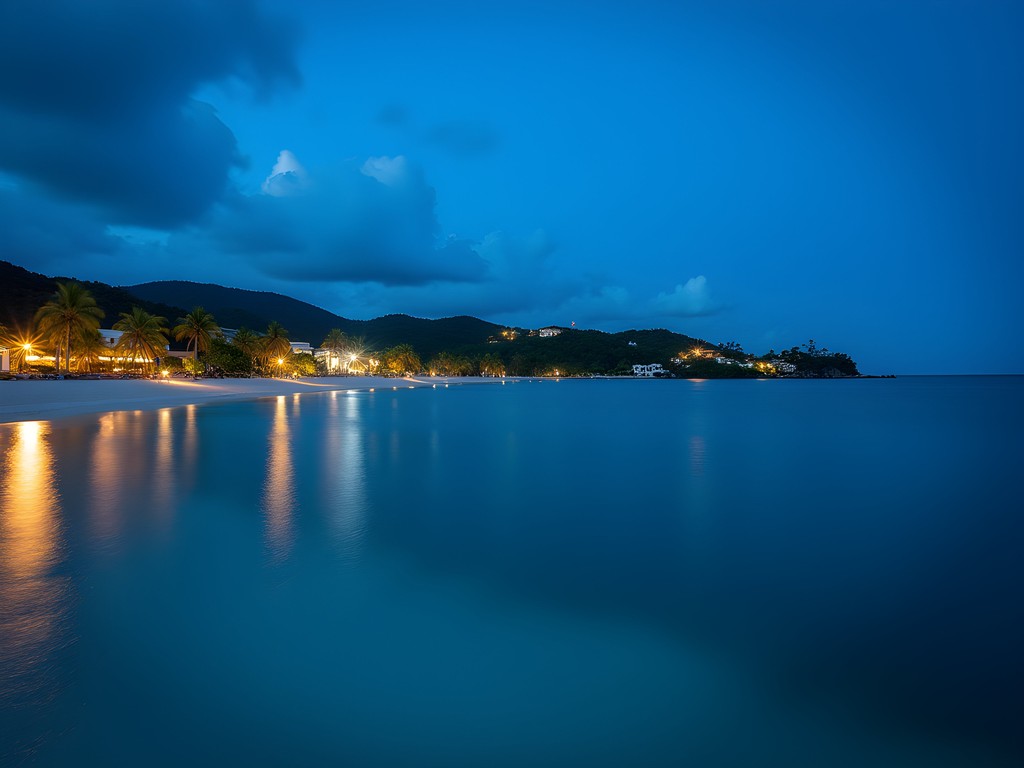
💡 Pro Tips
- Arrive 30 minutes before sunset to scout compositions and set up equipment
- Bring neutral density filters to extend exposure times if needed
- Use the tide prediction apps to time your shoot – lower tides expose more interesting foreground elements
Gear Considerations for Caribbean Conditions
After years photographing in the dry monasteries of Spain and the frigid mountains of Central Asia, Antigua's humidity and salt air presented a new set of challenges for my equipment. The island's microclimate demands specific precautions to protect your gear.
Humidity is your primary adversary. My camera bag now permanently houses several silica gel packets that I rotate and recharge regularly. For longer outings, especially near the water, I use a waterproof camera bag that provides excellent protection while remaining comfortable in the heat.
Lens changes require particular care here. I developed a routine of turning my back to the wind, using my body as a shield while quickly swapping lenses to minimize exposure to salt air and sand. Each evening back at my accommodation, I performed a thorough cleaning ritual with a lens cleaning kit, paying special attention to zoom mechanisms and battery compartments where salt can accumulate.
The intense Caribbean sun also affects your shooting experience. I found a viewfinder eyecup extension invaluable for blocking extraneous light when composing shots, especially during midday when the sun is directly overhead. And never underestimate the value of a good hat with a wide brim – not just for your personal comfort but also to provide improvised shade for your LCD screen when reviewing images.
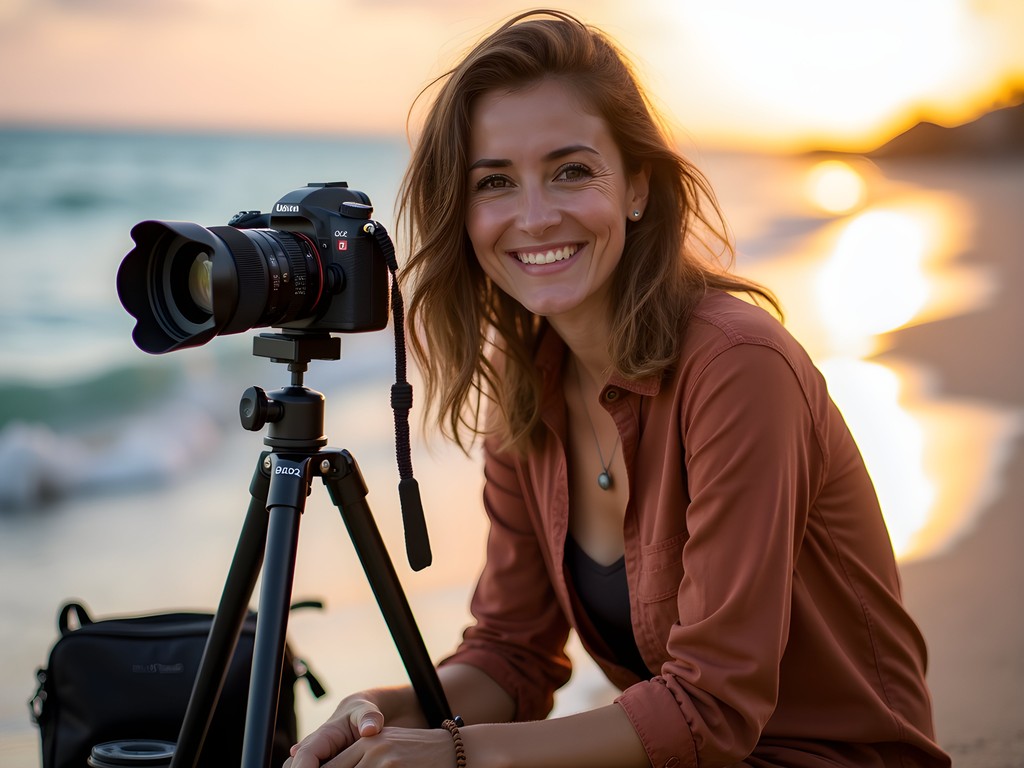
💡 Pro Tips
- Store batteries in sealed plastic bags with silica gel when not in use
- Clean your sensor before the trip and avoid changing lenses in windy beach conditions
- Use UV filters primarily as protection against salt spray rather than for their optical properties
Final Thoughts
As I packed away my gear on my final evening in St. John's, sorting through memory cards filled with Caribbean colors, I reflected on how this island had pushed me beyond my usual architectural focus. The vibrant palette of Antigua demanded a different visual language than the monasteries and remote landscapes I typically document. Here, life and color are inseparable – they flow through every corner of the island, from the painted buildings to the market stalls to the impossibly blue waters.
For photographers accustomed to more subdued environments, St. John's offers both challenge and liberation. Don't fight the color – embrace it. Let your white balance settings warm slightly to capture the genuine feel of the place. And most importantly, engage with the people whose lives create the vibrant tapestry that makes this place so photogenic. Some of my best images came after conversations, not just observations.
I'll return to my monastery projects with fresh eyes and perhaps a more courageous approach to color. But a piece of my photographer's heart will remain in St. John's, where the light and color taught me to see differently.
✨ Key Takeaways
- The golden hours in St. John's offer exceptional light quality with unique Caribbean characteristics
- Cultural photography at the public market requires respectful engagement but yields authentic imagery
- Technical challenges include extreme contrast, humidity, and salt air protection for equipment
- Blue hour at nearby beaches provides stunning color contrast between natural and artificial light
- The vibrant color palette of Antigua demands embracing rather than subduing saturation
📋 Practical Information
Best Time to Visit
December through April (dry season)
Budget Estimate
$150-200 per day including mid-range accommodation
Recommended Duration
5-7 days
Difficulty Level
Intermediate
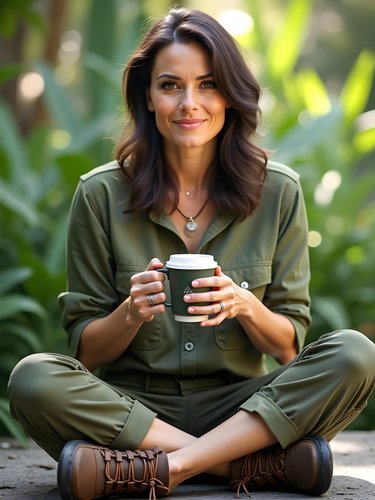
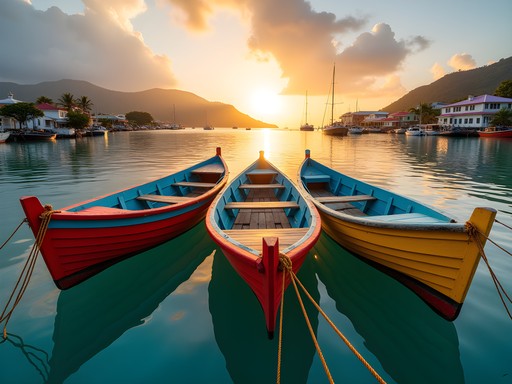



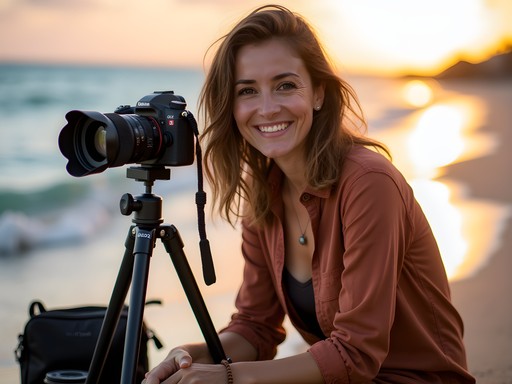




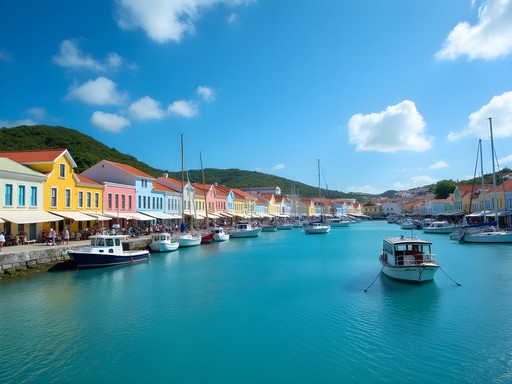
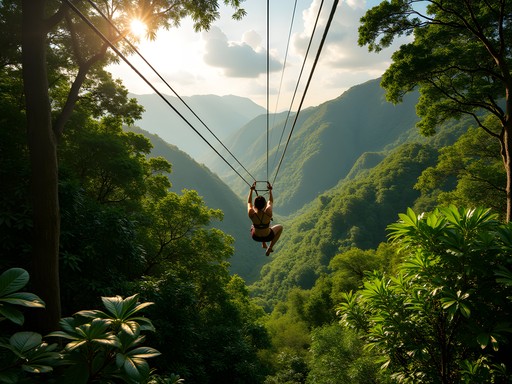

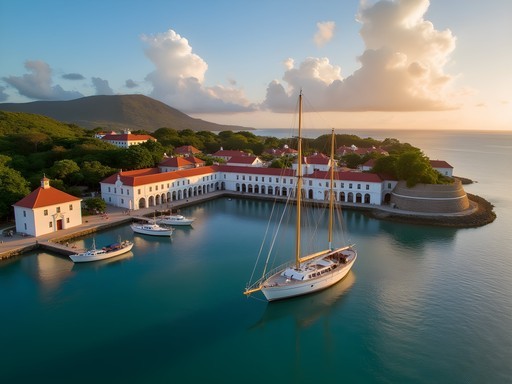


Comments
Claire Hawkins
Your market photos captured exactly what I love about Caribbean culture! When I visited with my kids last summer, they were initially shy about photographing people, but I found that buying something small first and chatting with vendors created wonderful photo opportunities. The fruit seller near the eastern entrance had the most photogenic display with mangoes arranged by color. For families visiting, I recommend the Saturday morning market when it's busiest - counterintuitive for photography perhaps, but the energy is incredible and the kids loved the local musicians who set up around 11am. Your composition tips about getting low for the colorful fabric stalls are spot on - those diagonal lines really do draw the eye!
backpacklegend
Just got back from Antigua last week and wish I'd had this guide before going! The light there is something else. One tip to add: if you're shooting St. John's Cathedral, try to go when there are some clouds in the sky. The white building against a pure blue sky can be challenging exposure-wise, but with some cloud texture, the building really pops. Also found that locals were incredibly friendly when I asked permission before taking photos - got some amazing portraits that way.
Ahmed Palmer
Excellent guide, Evelyn. I visited St. John's last year and found the light quality absolutely remarkable, especially during the golden hour at Fort James. The way the sunlight interacts with the colonial architecture creates a unique contrast that's difficult to capture elsewhere in the Caribbean. I'd add that photographers should consider visiting the Saturday morning market with a 35mm prime lens - the intimate setting and vibrant colors work wonderfully with a slightly wider perspective than you might initially think. My Sony 35mm f/1.8 rarely left my camera during market sessions.
backpacklegend
Ahmed, did you find early morning or late afternoon better for the market shots? Planning my schedule now!
Ahmed Palmer
Early morning, without question. By 8-9am you get the perfect combination of good light and authentic market activity before the cruise ship crowds arrive. The vendors are also more amenable to photos when they're fresh and setting up.
wildfan
Those blue hour shots from Dickenson Bay are absolutely stunning! Makes me want to book a flight right now. Did you have any issues with crowds during sunset?
Evelyn Rogers
Thanks wildfan! Dickenson Bay does get busy around sunset, but if you walk about 10 minutes north along the beach, you'll find much quieter spots with the same gorgeous light. Worth the extra steps!
wildfan
Perfect tip, thanks! Adding that to my notes for when I visit.
tripwanderer
Did you have any issues with humidity affecting your camera gear? Heading there in December!
Evelyn Rogers
Great question! I kept silica gel packets in my camera bag and avoided quick transitions from AC to outdoor heat. Lens fog was occasional but cleared quickly. Bring a microfiber cloth!
luckyseeker
Just got back from St. John's and wanted to add that if you're shooting the cathedral, go on a weekday morning around 10am. The light streams through the east windows and creates these amazing patterns on the floor. Much less crowded than weekends too!
Sage Dixon
Evelyn, your post brings back so many memories! I was in St. John's last year and completely missed the market day photo opportunities. The way you've captured the vibrant produce and the expressions of the locals tells such a rich story. I found that getting to Dickenson Bay for sunrise rather than sunset offered a completely different color palette - the morning light had this soft pink quality that contrasted beautifully with the turquoise water. Did you try any night photography at English Harbour? The historic naval buildings under starlight were a highlight of my trip. I used my tripod which was perfect for those long exposures on the harbor walls.
Evelyn Rogers
Thanks Sage! I didn't make it to English Harbour at night - that sounds magical! Adding it to my list for next time. And yes, a good tripod is absolutely essential for those harbor night shots.
explorechamp
Your Dickenson Bay blue hour shots are STUNNING! Those colors are unreal! 😍
adventurehero
Beautiful photos! What time did you visit St. John's Cathedral to get that perfect lighting? Planning my trip for November!
Evelyn Rogers
Thank you! I shot the cathedral around 8:30-9:30am when the morning light hits the white facade beautifully. The contrast with the blue sky was incredible then. If you go later, the interior light through the windows is magical around 3-4pm!
adventurehero
Perfect timing info, thanks! Adding this to my itinerary now.
wildmate
Heading to Antigua in November - is that a good time for photography or should I try to reschedule for better light?
happywanderer
November is actually perfect! End of rainy season means dramatic skies but fewer tourists. You'll get those amazing post-rain clear air days that make colors pop!
Venture X
Premium card with 2X miles, $300 travel credit, Priority Pass